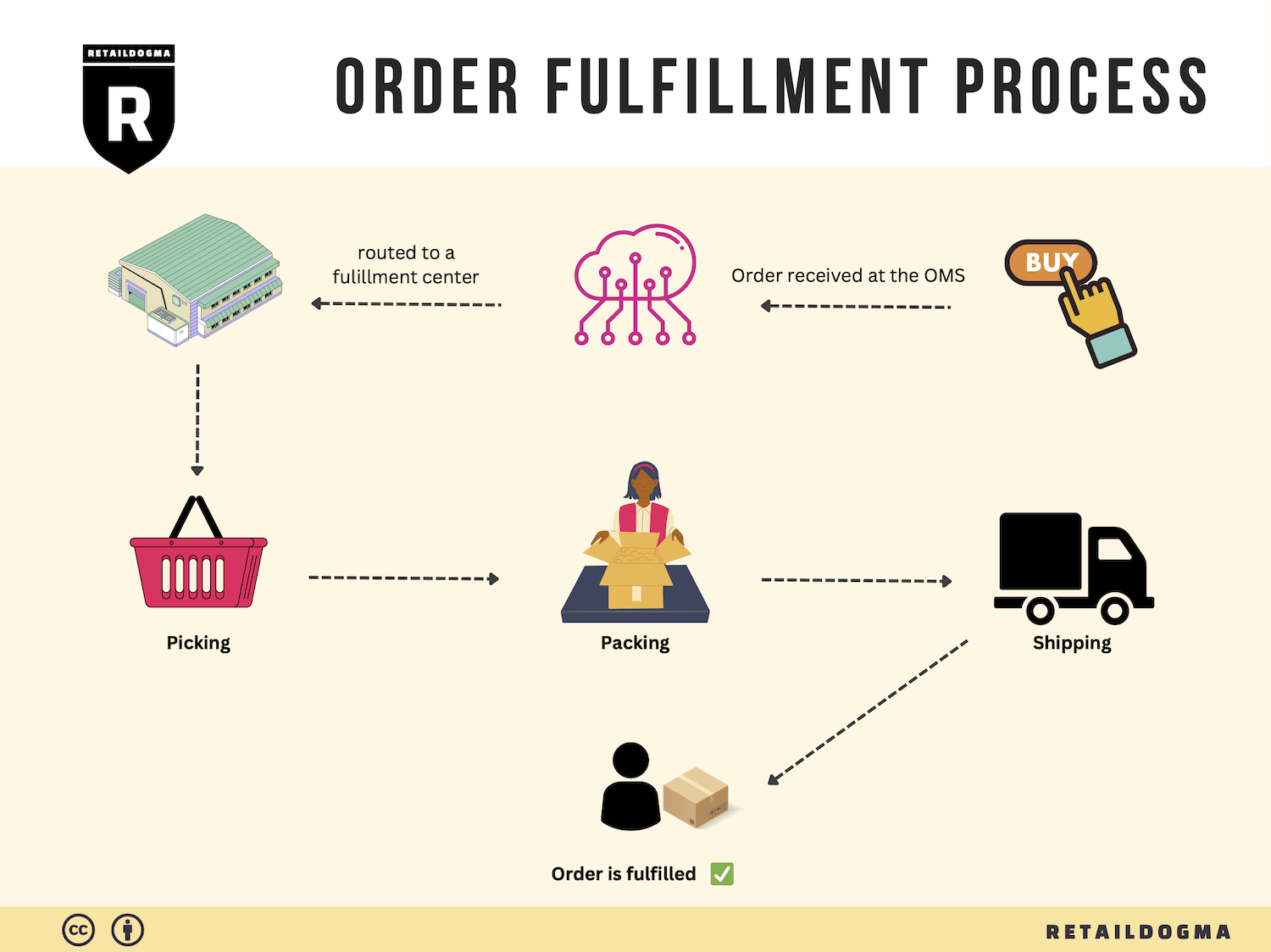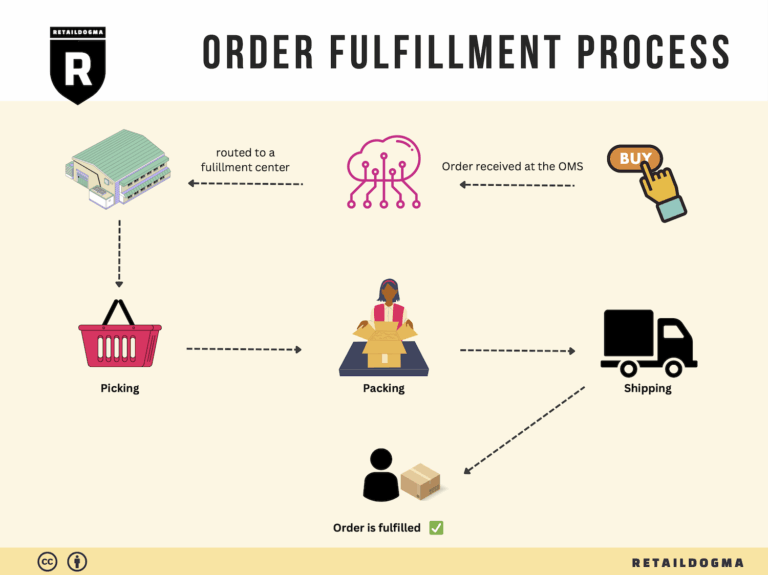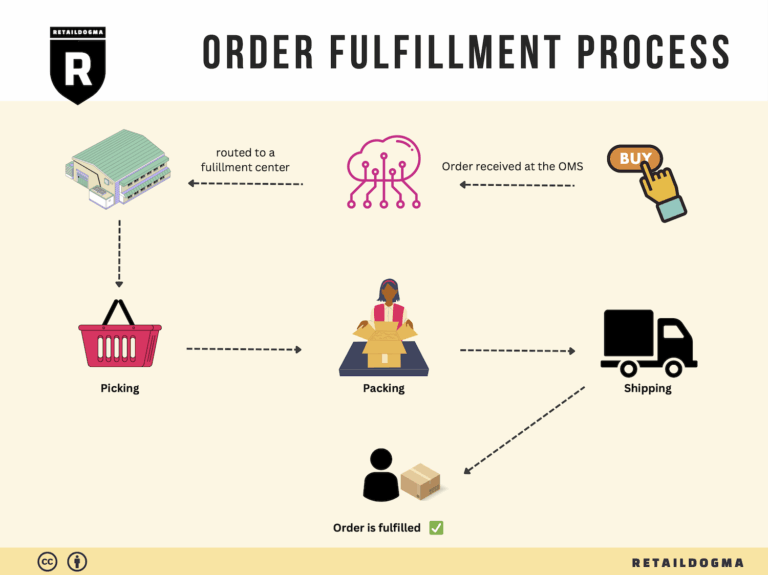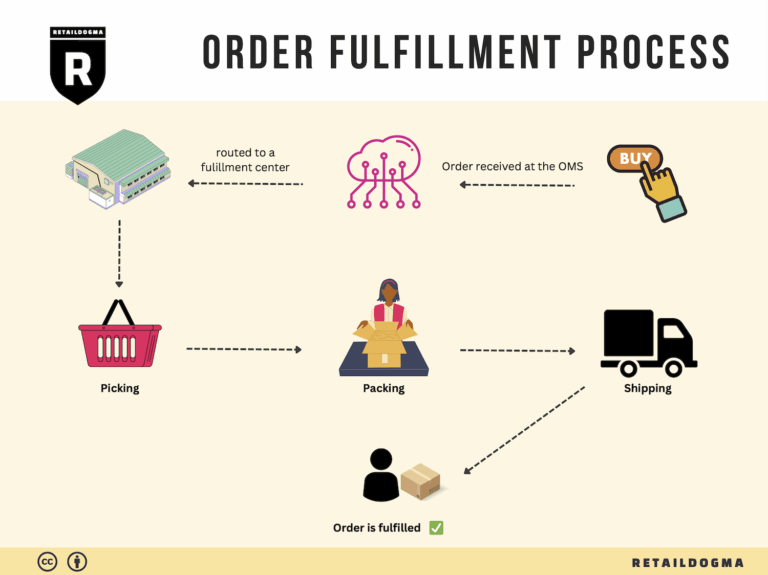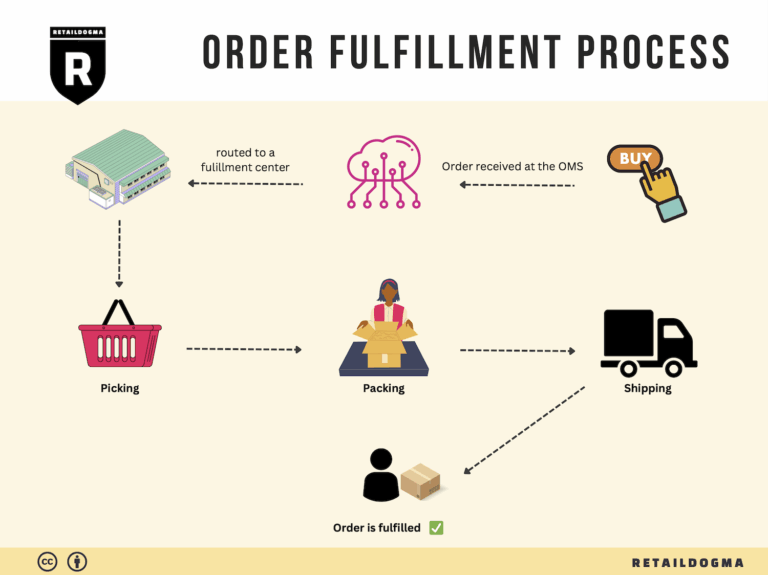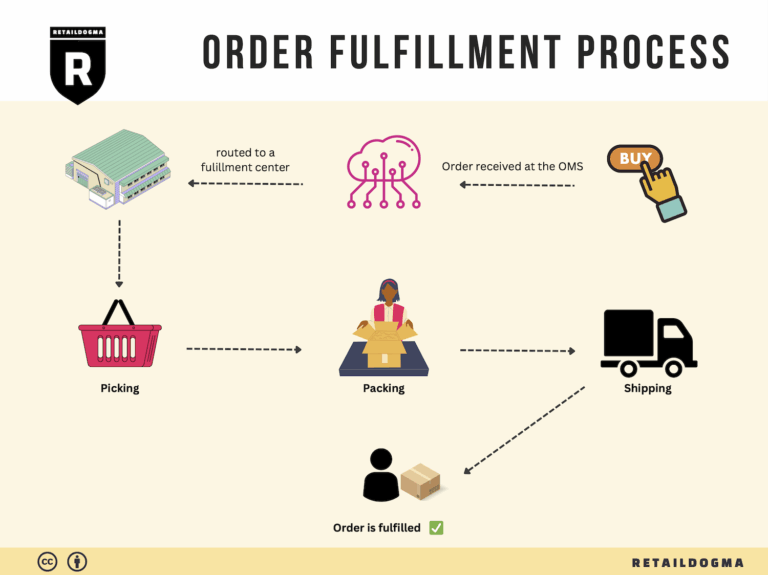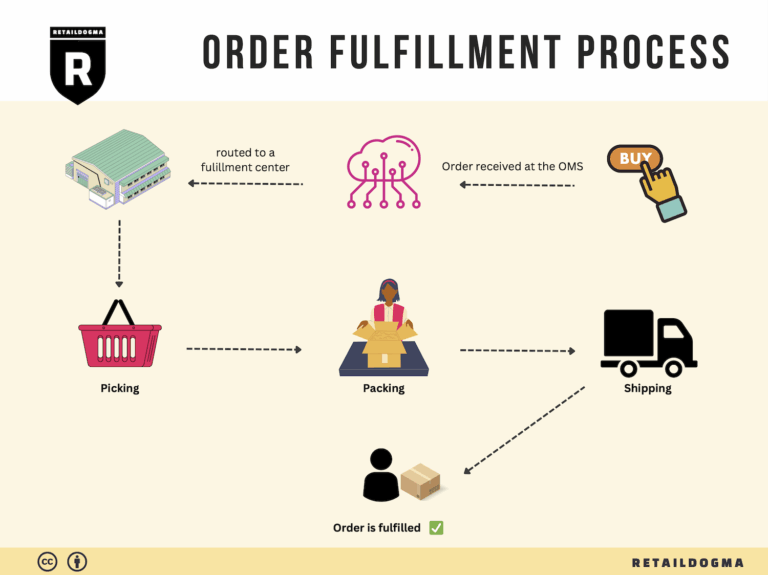How Order Fulfillment Works: A Step-by-Step Guide for Businesses
What is E-commerce Fulfillment? An Introduction for Growing Businesses
Understanding the Fulfillment Challenge
As your e-commerce business begins to thrive, you may find yourself grappling with the complexities of packing and shipping orders. The excitement of growing sales can quickly turn into a logistical nightmare if the fulfillment process is not managed effectively. Many entrepreneurs and operations managers feel overwhelmed by the sheer volume of orders, especially during peak seasons or promotional events. This is where a solid understanding of e-commerce fulfillment becomes essential.
What is E-commerce Fulfillment?
At its core, e-commerce fulfillment refers to the entire process of getting a product from your warehouse or fulfillment center to your customer’s doorstep. This includes inventory management, order processing, picking and packing items, shipping, and handling returns. As your business scales, the need for efficient and reliable fulfillment solutions becomes increasingly critical.
What This Guide Will Cover
In this comprehensive guide, we will explore various fulfillment models, including third-party logistics (3PL) and Fulfillment by Amazon (FBA), and how each can impact your operations. We will break down the core services that fulfillment partners offer, such as warehousing, shipping, and customer service, to help you identify what aligns with your business needs.
Choosing the right fulfillment partner is vital for your operational success. We will provide insights on key factors to consider when evaluating potential partners, including their capabilities, technology, and customer service reputation. Additionally, we will delve into pricing structures, helping you understand how to navigate costs associated with fulfillment services, ensuring you make informed decisions that align with your budget.
Empowering Your Business Decisions
The ultimate goal of this guide is to empower e-commerce business owners and operations managers to make smart, strategic decisions regarding their logistics. With the right fulfillment strategy, you can streamline operations, enhance customer satisfaction, and ultimately drive growth. By understanding the ins and outs of fulfillment, you can focus on what you do best—growing your business—while leaving the logistics to the experts.
Get ready to transform your fulfillment process into a competitive advantage that supports your business’s long-term success.
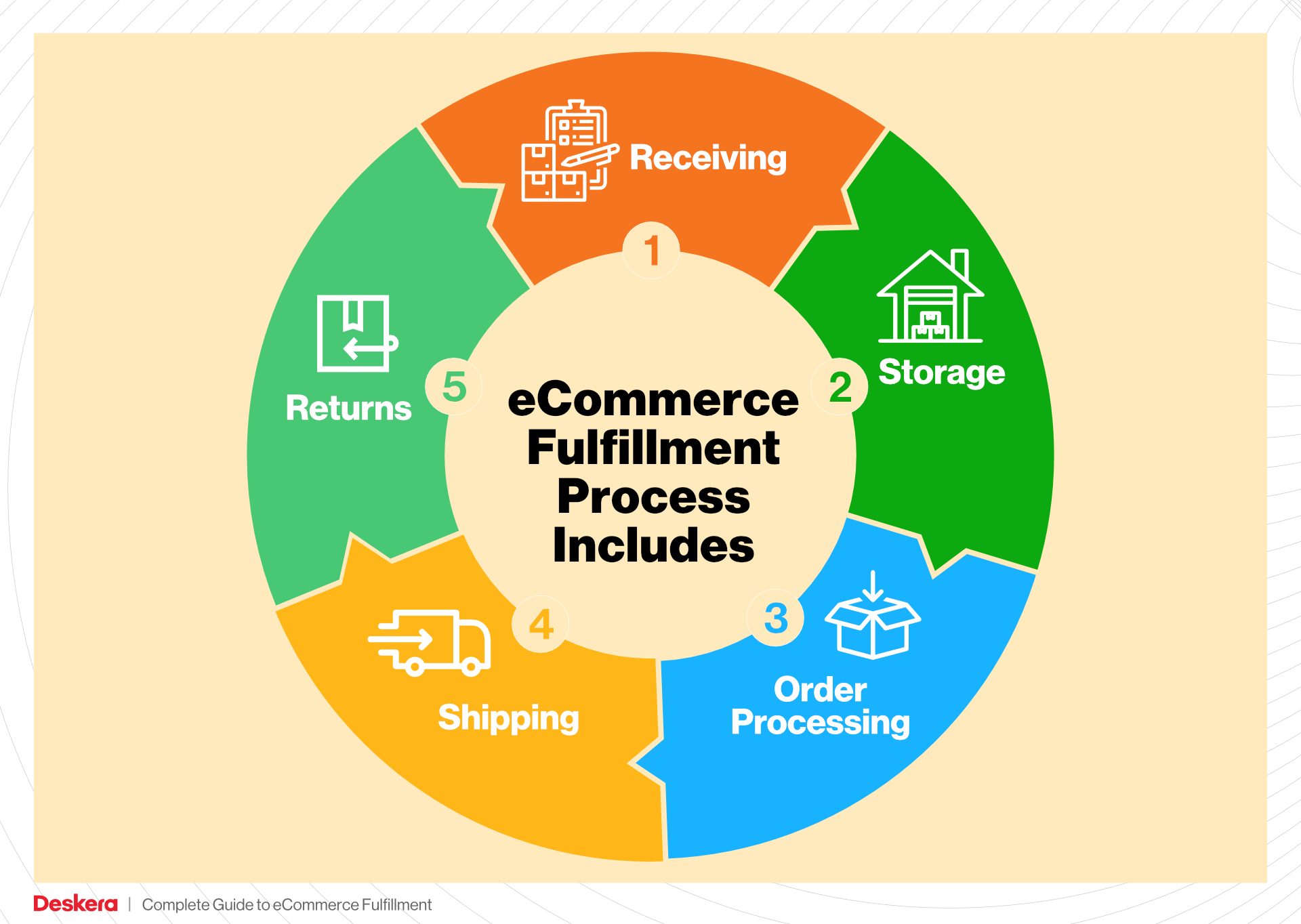
What You’ll Learn In This Guide
- What is E-commerce Fulfillment? An Introduction for Growing Businesses
- The Order Fulfillment Process: From ‘Buy’ Button to Customer’s Door
- Comparing Fulfillment Models: In-House vs. 3PL vs. Dropshipping
- A Deep Dive into Amazon FBA: Pros, Cons, and Who It’s For
- Core Services Offered by Fulfillment Centers
- How to Choose a Fulfillment Partner: A 6-Point Checklist
- Understanding Fulfillment Pricing: A Breakdown of Common Fees
- Frequently Asked Questions (FAQs) about Fulfillment
- Conclusion: Is Outsourcing Fulfillment the Right Move for Your Business?
- Important Disclaimer
The Order Fulfillment Process: From ‘Buy’ Button to Customer’s Door
1. Receiving Inventory
The first step in the order fulfillment process is receiving inventory. This involves checking incoming shipments against purchase orders to ensure that the correct items and quantities have been delivered. Upon arrival, each product is assigned a Stock Keeping Unit (SKU), a unique identifier that simplifies tracking and management within the warehouse.
Importance: Efficient inventory receiving is crucial as it sets the foundation for the entire fulfillment process. Any discrepancies at this stage—such as missing items or incorrect shipments—can lead to delays later on. By ensuring accuracy and completeness during this step, businesses can maintain optimal inventory levels, avoid stockouts, and enhance customer satisfaction.
Key Term: SKU (Stock Keeping Unit) – A unique identifier for each product that helps streamline inventory management.
2. Warehouse Storage
Once inventory is received and verified, the next step is warehouse storage. Products are organized and stored in designated locations within the fulfillment center. This organization can be based on various factors, including product type, size, or demand frequency. Implementing a systematic storage method—like FIFO (First In, First Out)—ensures that older stock is sold before newer inventory, reducing the risk of obsolescence.
Importance: Proper warehouse storage maximizes space utilization and improves order-picking efficiency. By strategically placing high-demand items closer to the packing area, businesses can reduce the time spent locating products, thereby speeding up the overall fulfillment process.
Key Term: FIFO (First In, First Out) – An inventory management method that ensures older products are sold before newer ones, minimizing waste.

3. Order Picking
Order picking is the process of retrieving items from the warehouse to fulfill customer orders. This step typically involves the use of pick lists, which detail the specific items and quantities needed for each order. Depending on the size of the operation, order picking can be done manually or through automated systems like pick-to-light or voice-picking technologies.
Importance: Efficient order picking directly impacts fulfillment speed and accuracy. Errors during this stage can lead to incorrect shipments, resulting in customer dissatisfaction and increased return rates. By employing effective picking strategies and technologies, businesses can enhance their operational efficiency and improve customer experience.
Key Term: Pick Lists – Documents or digital displays that guide workers on what items to retrieve for order fulfillment.
4. Order Packing
After items have been picked, they move to the packing stage. Here, products are carefully packed into boxes or envelopes, ensuring they are secure for transit. This process often includes weighing packages, printing shipping labels, and including any necessary documentation, such as packing slips or return instructions.
Importance: Order packing is critical for protecting products during shipping and ensuring they arrive in excellent condition. Proper packing not only minimizes the risk of damage but also enhances the unboxing experience for customers, which can lead to positive reviews and repeat business. Additionally, packing efficiency can also reduce shipping costs.
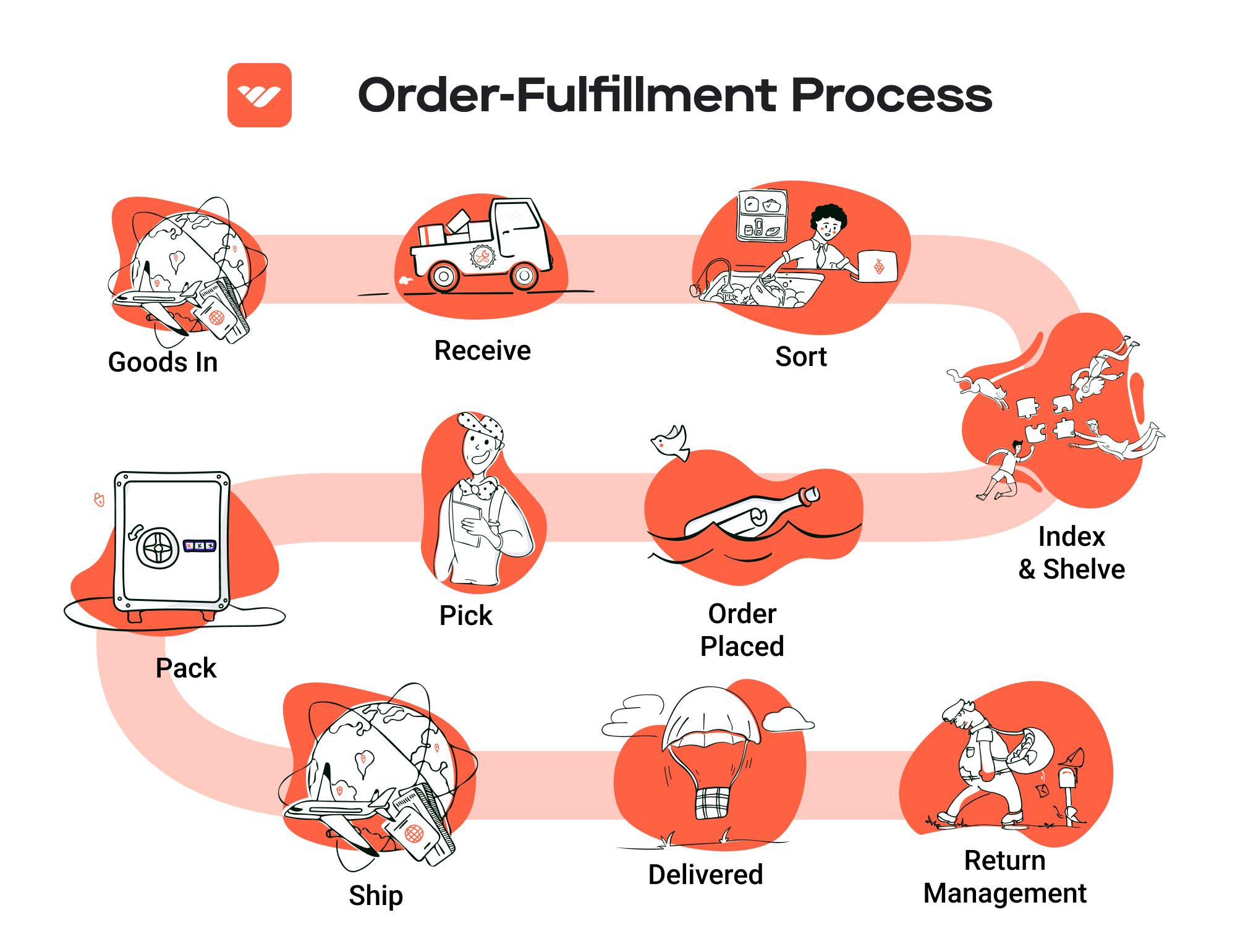
Key Term: Packing Slips – Documents included with shipments that list the items contained in the package, serving as a receipt for the customer.
5. Shipping & Delivery
The final step in the order fulfillment process is shipping and delivery. Once packages are packed and labeled, they are handed off to a shipping carrier. Businesses must choose the appropriate shipping method based on factors like cost, delivery speed, and customer preferences. Tracking numbers are often provided to customers, allowing them to monitor their order’s journey.
Importance: Timely shipping is vital for customer satisfaction, as delays can lead to frustration and lost sales. By optimizing shipping methods and maintaining strong relationships with carriers, businesses can ensure that orders arrive on time and in good condition. Furthermore, offering multiple shipping options can enhance customer experience and cater to diverse needs.
Key Term: Tracking Number – A unique code assigned to each shipment that allows customers to track their order during transit.
By understanding and optimizing each of these five steps—Receiving Inventory, Warehouse Storage, Order Picking, Order Packing, and Shipping & Delivery—e-commerce businesses can significantly improve their order fulfillment processes, enhance customer satisfaction, and ultimately scale their operations effectively.
Comparing Fulfillment Models: In-House vs. 3PL vs. Dropshipping
Comparing Fulfillment Models: In-House Fulfillment, 3PL, and Dropshipping
| Model | Who Handles Inventory | Best For (Business Stage) | Key Advantage | Key Disadvantage |
|---|---|---|---|---|
| In-House Fulfillment | The business itself | Established businesses with stable sales | Full control over inventory and operations | High overhead costs and complexity |
| Third-Party Logistics (3PL) | A third-party logistics provider | Growing businesses seeking scalability | Cost-effective scalability and expertise | Less control over inventory and fulfillment speed |
| Dropshipping | Supplier or manufacturer | Startups and small businesses | Low initial investment and risk | Lower profit margins and reliance on suppliers |
In-House Fulfillment
In-house fulfillment refers to a model where a business manages its own inventory and order processing. This model is typically best suited for established businesses that have stable sales and a clear understanding of their operational needs. One of the key advantages of in-house fulfillment is the level of control it provides. Businesses can directly manage their inventory, fulfillment processes, and customer interactions, leading to improved customer service and tailored operations. However, this model comes with significant disadvantages, notably high overhead costs associated with warehousing, staffing, and technology. Additionally, managing logistics in-house can become complex as order volumes increase, requiring investments in systems and processes that can strain resources.
Third-Party Logistics (3PL)
Third-party logistics (3PL) is a fulfillment model where businesses outsource their logistics and supply chain management to specialized providers. This model is ideal for growing businesses that seek to scale their operations without the burden of managing logistics themselves. A major advantage of using a 3PL is the cost-effective scalability it offers. Businesses can leverage the expertise of logistics providers who already have established processes, technology, and networks in place, allowing them to focus on their core competencies. However, one of the trade-offs of this model is a potential loss of control over inventory and fulfillment speed. Businesses must rely on their 3PL partner to maintain service levels, which can lead to challenges in responsiveness and customer satisfaction if not managed carefully.
Dropshipping
Dropshipping is a fulfillment model where a retailer does not keep products in stock but instead transfers customer orders directly to a supplier or manufacturer, who then ships the products directly to the customer. This model is particularly appealing to startups and small businesses due to its low initial investment and reduced financial risk, as there is no need to purchase inventory upfront. The key advantage of dropshipping is the ability to offer a wide range of products without the overhead associated with warehousing and fulfillment. However, dropshipping also presents significant disadvantages, including lower profit margins due to reliance on suppliers and the risk of stock shortages or delays that can impact customer satisfaction. Additionally, businesses must be vigilant about supplier reliability and product quality, as they have less control over these aspects.
Conclusion
When evaluating which fulfillment model is best for your business, consider your current stage, resources, and long-term goals. Each model has its unique advantages and challenges. In-house fulfillment offers control but requires significant investment and management capabilities. On the other hand, 3PL provides scalability and expertise but can lead to less control over the fulfillment process. Finally, dropshipping offers a low-risk entry point for new businesses but can result in lower profits and reliance on suppliers. The right choice will depend on your specific business needs, operational capabilities, and market conditions.
A Deep Dive into Amazon FBA: Pros, Cons, and Who It’s For
Understanding Fulfillment by Amazon (FBA)
Fulfillment by Amazon (FBA) is a service offered by Amazon that allows sellers to store their products in Amazon’s fulfillment centers. Amazon then takes care of storage, packaging, and shipping of these products directly to customers. This service enables sellers to leverage Amazon’s extensive logistics network, providing them with the ability to reach a vast customer base without the complexities of managing their own fulfillment operations.
How FBA Works
-
Inventory Management: Sellers send their products to Amazon’s fulfillment centers. Once the products are received, they are stored in Amazon’s warehouses until sold.
-
Order Processing: When a customer places an order for a product listed under FBA, Amazon takes care of all aspects of the transaction. This includes picking the item from the warehouse, packing it securely, and shipping it to the customer.
-
Customer Service and Returns: Amazon also handles customer inquiries and returns for FBA products, which means sellers don’t have to manage these processes themselves.
-
Multi-Channel Fulfillment: Sellers can use FBA not just for sales made on Amazon, but also for orders from their own websites or other sales channels, giving them flexibility and efficiency.
Pros of Using FBA
Prime Eligibility
One of the standout advantages of FBA is that products fulfilled through Amazon become eligible for Amazon Prime, which can significantly increase sales. Prime members are more likely to purchase items that are Prime-eligible due to the benefits of free two-day shipping.
Customer Trust
Amazon is a well-established brand known for its customer service. By using FBA, sellers can benefit from Amazon’s reputation, which can lead to increased trust from potential buyers. Customers often feel more secure purchasing items that are fulfilled by Amazon due to their well-known return policies and customer support.
Multi-Channel Fulfillment
FBA offers the ability to fulfill orders from various channels, not just Amazon. This means that if you are selling on your own website or through other marketplaces, you can still use Amazon’s logistics network to fulfill those orders. This flexibility allows sellers to streamline their operations and reduce shipping costs.
Simplified Logistics
Managing logistics can be a daunting task for e-commerce businesses, especially as they scale. FBA simplifies this process by handling storage, packing, shipping, and customer service. This allows sellers to focus on product development and marketing rather than the complexities of logistics.
Cons of Using FBA
High Fees
While FBA provides many benefits, it comes with costs that can add up quickly. Sellers are charged storage fees for the space their inventory occupies in Amazon’s warehouses, as well as fulfillment fees for each order processed. These costs can significantly impact profit margins, particularly for low-priced items.
Strict Inventory Rules
Amazon has strict guidelines regarding inventory management. Sellers must adhere to specific requirements regarding the condition of the products, labeling, and packaging. Failure to comply can result in additional fees or even account suspension. This can be particularly challenging for new sellers who may not be familiar with Amazon’s regulations.
Commingling Risks
When using FBA, sellers’ inventory may be mixed with inventory from other sellers. This commingling can pose risks, such as shipping the wrong item to customers or losing track of inventory. If a customer receives a damaged or defective product that was originally sent by another seller, it can lead to negative feedback and returns, which can affect a seller’s performance metrics.
Limited Control Over Fulfillment
While FBA handles logistics, sellers relinquish a degree of control over how their products are stored and shipped. This can lead to issues if products are not handled in a way that meets the seller’s quality standards. For businesses that prioritize a specific customer experience, this lack of control can be a disadvantage.
Who is FBA Best For?
Fulfillment by Amazon is particularly beneficial for e-commerce businesses that are looking to scale quickly and efficiently. Here are some types of sellers who may find FBA to be a good fit:
-
New Entrepreneurs: New sellers can leverage FBA to tap into Amazon’s massive customer base without the need to invest heavily in their own logistics infrastructure.
-
Small to Medium-Sized Businesses: Businesses that are experiencing growth but lack the resources to manage their own fulfillment can benefit from the streamlined operations that FBA provides.
-
Sellers of High-Volume Products: Sellers with high-volume, fast-moving products may find that the cost of FBA is justified by increased sales and reduced shipping hassles.
-
Brands Seeking Amazon Presence: Established brands looking to enter the Amazon marketplace can use FBA to manage logistics while focusing on branding and marketing strategies.
In conclusion, Fulfillment by Amazon offers a powerful solution for e-commerce sellers looking to streamline their logistics and expand their reach. While there are notable costs and challenges associated with the service, the benefits of increased sales potential, customer trust, and simplified fulfillment processes can make FBA an attractive option for many businesses. Careful consideration of the pros and cons will help sellers determine if FBA aligns with their operational goals and business strategy.
Core Services Offered by Fulfillment Centers
Inventory Management & Warehousing
Inventory management and warehousing are fundamental services provided by fulfillment centers, enabling e-commerce businesses to maintain optimal stock levels while minimizing overhead costs. Fulfillment centers utilize sophisticated inventory management systems that track inventory in real-time, ensuring that businesses have accurate visibility into their stock levels.
The benefits of effective inventory management include the ability to reduce holding costs associated with excess inventory, mitigate stockouts that can lead to lost sales, and streamline reordering processes. By leveraging data analytics, fulfillment centers can predict demand trends, allowing businesses to make informed decisions about inventory purchases. This service is particularly crucial for seasonal products, where demand can fluctuate significantly.
Moreover, warehousing facilities are designed to efficiently store a variety of products, accommodating different sizes and shapes. This flexibility allows businesses to scale their operations without the need for substantial investment in physical infrastructure. The strategic location of fulfillment centers can also lead to reduced shipping times and costs, enhancing customer satisfaction and loyalty.
Pick and Pack Services
Pick and pack services are at the core of fulfillment operations, where individual products are picked from inventory and packed for shipment to customers. This process is not just about grabbing items from shelves; it involves a systematic approach that ensures accuracy and efficiency.
The benefits of pick and pack services include increased order accuracy, which is critical for maintaining customer trust and satisfaction. A well-implemented pick and pack system minimizes human error by utilizing technology such as barcode scanning and automated picking systems. This results in faster order fulfillment times, which is essential in today’s fast-paced e-commerce environment where customers expect quick delivery.
Additionally, fulfillment centers often offer custom packing options, allowing businesses to create a unique unboxing experience for their customers. This can include branded packaging, gift wrapping, or including promotional materials. Such enhancements can improve brand perception and customer engagement, ultimately leading to repeat purchases.
Kitting and Assembly
Kitting and assembly services provided by fulfillment centers involve grouping individual items together to create a ready-to-sell product. This can include bundling complementary products, assembling items that require multiple components, or even creating promotional packages.
The primary benefit of kitting is that it allows e-commerce businesses to offer unique product combinations that can enhance sales. For instance, a camping gear retailer might bundle a tent, sleeping bag, and cooking equipment into a single kit, making it easier for customers to purchase everything they need in one go. This not only simplifies the shopping experience but can also increase the average order value.
Kitting and assembly services can also streamline the supply chain by reducing the number of SKUs that need to be managed. Instead of tracking numerous individual products, businesses can focus on a smaller number of bundled items. This can lead to improved inventory management and reduced complexity in the order fulfillment process.
Returns Management (Reverse Logistics)
Returns management, often referred to as reverse logistics, is a critical service offered by fulfillment centers that handles the process of product returns. This includes everything from receiving returned items to inspecting, restocking, or disposing of them as necessary.
The benefits of an efficient returns management system are significant. First, it enhances customer satisfaction by providing a hassle-free return experience. In today’s e-commerce landscape, a generous return policy can be a deciding factor for customers, influencing their willingness to complete a purchase. Fulfillment centers can facilitate easy return processes, often providing pre-paid return shipping labels and tracking for returned items.
Moreover, a well-managed returns process can help businesses recover value from returned products. Fulfillment centers can assess the condition of returned items and determine whether they can be restocked, repaired, or sold at a discount. This not only minimizes losses but can also contribute to sustainability efforts by reducing waste.
In conclusion, the core services offered by fulfillment centers—inventory management and warehousing, pick and pack services, kitting and assembly, and returns management—are essential for e-commerce businesses aiming to scale efficiently. By leveraging these services, businesses can optimize their logistics operations, enhance customer satisfaction, and ultimately drive growth in a competitive market.
How to Choose a Fulfillment Partner: A 6-Point Checklist
Location & Warehouse Network
The geographical location of your fulfillment partner can significantly affect shipping times and costs. A partner situated near major consumer markets can reduce delivery times, enhance customer satisfaction, and minimize shipping expenses.
Questions to Ask:
– Where are your warehouses located, and how many do you operate?
– How do you determine which warehouse fulfills an order?
– Do you have the ability to open additional locations if needed?
Technology & Integrations
In today’s e-commerce landscape, technology is paramount. A fulfillment partner should provide a robust technology platform that integrates seamlessly with your existing systems, such as your e-commerce platform, inventory management tools, and customer relationship management (CRM) software.
Questions to Ask:
– What technology systems do you use for inventory management and order processing?
– Can your system integrate with our e-commerce platform? If so, what is the process?
– Do you offer real-time tracking and reporting capabilities?
Specializations (e.g., Cold Storage, Oversized Items)
Different businesses have unique requirements based on their product types. If you sell perishables, oversized items, or specialized goods, it’s crucial to partner with a fulfillment center that has the necessary capabilities and expertise.
Questions to Ask:
– What types of products do you specialize in handling?
– Do you have facilities for temperature-sensitive items or oversized products?
– Can you accommodate custom packaging or kitting services?
Scalability & Capacity
As your business grows, your fulfillment needs will evolve. It’s essential to choose a partner that can scale with you, whether you’re experiencing seasonal spikes in demand or long-term growth.
Questions to Ask:
– How do you handle fluctuations in order volume?
– What is your maximum capacity for order fulfillment?
– Can you provide examples of how you’ve scaled operations for other clients?
Pricing and Contracts
Understanding the cost structure and contract terms of a potential fulfillment partner is critical to your business’s bottom line. Look for transparency in pricing and flexibility in contract terms to avoid being locked into unfavorable agreements.
Questions to Ask:
– What pricing model do you use (per order, monthly fees, etc.)?
– Are there any hidden fees (storage, pick-and-pack, shipping surcharges)?
– What are the contract terms, and is there flexibility for scaling up or down?
Customer Support & Reviews
Strong customer support can make a significant difference in your partnership. A responsive and knowledgeable support team can help you navigate challenges quickly and effectively. Additionally, researching reviews can provide insight into the partner’s reliability and service quality.
Questions to Ask:
– What customer support options do you offer (phone, email, chat)?
– What are your typical response times for support inquiries?
– Can you provide references or case studies from current or past clients?
Conclusion
Choosing the right fulfillment partner is a critical decision that can impact your e-commerce operations significantly. By considering the factors outlined in this checklist, you can make an informed choice that aligns with your business goals and enhances your customer experience. Always remember that a partnership is not just about logistics; it’s about building a relationship that supports your growth and success.
Understanding Fulfillment Pricing: A Breakdown of Common Fees
Initial Setup Fees
Initial setup fees are charges incurred when you first engage with a fulfillment center. These fees typically cover the administrative work required to onboard your business, including account setup, integration with your e-commerce platform, and any necessary customizations. The cost can vary significantly depending on the complexity of the services you require. For instance, a basic setup might cost a few hundred dollars, while a more complex integration with multiple sales channels could run into the thousands.
To calculate these fees, fulfillment centers often consider the following factors:
– Complexity of Integration: The more systems you need to connect (like inventory management, CRM, or ERP systems), the higher the setup fee.
– Customization Requirements: If you need tailored solutions or specific workflows, expect additional charges.
– Volume of Products: A higher number of SKUs may lead to increased setup costs due to the additional time and resources needed to configure the system.
Receiving Fees
Receiving fees are charged when your inventory arrives at the fulfillment center. This fee covers the labor and equipment required to unload, inspect, and stock your products. Receiving fees can be calculated based on the volume of products being received, typically measured in units or pallets.
Key factors influencing receiving fees include:
– Volume of Inventory: Larger shipments may incur a lower per-unit fee, while smaller shipments might have a higher rate due to the fixed costs associated with receiving.
– Condition of Goods: If products arrive damaged or require additional inspection, extra fees may apply.
– Special Handling: Items that require special treatment (like hazardous materials or oversized goods) can also lead to increased receiving fees.
Storage Fees (per pallet/bin)
Storage fees are charged for the space your inventory occupies within the fulfillment center. These fees are typically calculated on a monthly basis and can be assessed per pallet, bin, or cubic foot, depending on the storage model of the fulfillment center.
When determining storage fees, consider the following:
– Type of Storage: Different fulfillment centers may offer various storage options (bulk storage, shelf storage, climate-controlled storage) that come with different pricing structures.
– Duration of Storage: If your inventory remains in the warehouse for an extended period, you may incur additional long-term storage fees.
– Inventory Turnover: High turnover rates might qualify you for lower storage fees, as the fulfillment center prefers to keep inventory moving rather than sitting idle.
Pick & Pack Fees (per item/order)
Pick and pack fees are charged for the labor involved in selecting items from inventory and packaging them for shipment. These fees can vary based on whether you are charged per item or per order. Typically, fulfillment centers charge a base fee for picking an order and an additional fee for each item included in that order.
Factors that influence pick and pack fees include:
– Order Complexity: More complex orders (e.g., multiple SKUs, special packing requirements) will generally incur higher fees.
– Volume of Orders: Fulfillment centers often provide discounts for higher volumes, so the more orders you process, the lower your per-order fee may become.
– Special Packaging Requirements: If your items require custom packaging or labeling, this can also increase your pick and pack fees.
Shipping Fees
Shipping fees are the costs associated with delivering your products to customers. These fees can vary widely based on the shipping method chosen (standard, expedited, express), the weight and dimensions of the package, and the destination.
Key considerations for shipping fees include:
– Shipping Method: Different rates apply for standard versus expedited shipping, and fulfillment centers may have partnerships with carriers that can influence pricing.
– Weight and Size of Package: Heavier and larger packages typically incur higher shipping costs.
– Destination: Shipping costs vary based on the destination; for example, shipping to rural areas may be more expensive than to urban centers.
Conclusion: Tips for Getting an Accurate Quote
To obtain an accurate quote for fulfillment services, consider the following tips:
- Provide Detailed Information: Be transparent about your product types, order volumes, and specific fulfillment needs to allow providers to give a precise estimate.
- Ask About All Fees: Ensure you understand all potential fees, including those for setup, receiving, storage, picking, packing, and shipping.
- Compare Multiple Providers: Getting quotes from several fulfillment centers can help you understand the market rates and find the best fit for your business.
- Inquire About Volume Discounts: If you anticipate growth, ask about discounts for higher volumes or long-term contracts that could reduce overall costs.
- Request a Trial Period: Some fulfillment centers may offer trial periods or flexible terms that allow you to assess their services without a long-term commitment.
By understanding these common fulfillment fees and asking the right questions, you can better navigate the pricing landscape and select a fulfillment partner that aligns with your business goals.
Frequently Asked Questions (FAQs) about Fulfillment
1. What is the Sierra Trading Post fulfillment center?
The Sierra Trading Post fulfillment center is a centralized distribution facility located in Cheyenne, Wyoming. It manages the storage, packing, and shipping of a wide range of outdoor and active lifestyle products sold through Sierra’s online platform and catalog orders. This facility is crucial for maintaining efficient operations, ensuring timely delivery to customers, and supporting the multi-channel retail strategy of the business.
2. How does the fulfillment process work at Sierra Trading Post?
The fulfillment process at Sierra Trading Post typically involves receiving inventory, storing it in a systematic manner, picking items based on customer orders, packing them securely, and then shipping them to the customers. Orders can be processed for various shipping methods, including standard, expedited, and curbside pickup options for local customers.
3. What is the difference between a warehouse and a fulfillment center?
A warehouse is primarily focused on storing inventory, while a fulfillment center specializes in processing and shipping orders directly to customers. Fulfillment centers often include additional services such as order picking, packing, and returns processing, whereas warehouses may not provide these value-added services.
4. What is a 3PL, and how does it relate to Sierra Trading Post?
A 3PL, or third-party logistics provider, is a service that manages logistics and fulfillment operations for businesses. While Sierra Trading Post operates its own fulfillment center, companies may choose to partner with a 3PL for outsourcing logistics to reduce operational complexity and focus on core business activities.
5. How much do fulfillment services cost at Sierra Trading Post?
Fulfillment service costs at Sierra Trading Post can vary based on factors such as order volume, shipping method, and the size or weight of the products. Typically, shipping costs are determined by the order total and can include standard, express, or expedited rates. Additional charges may apply for oversized items or special handling requirements.
6. What shipping options are available through Sierra Trading Post?
Sierra Trading Post offers several shipping options, including standard ground shipping, express shipping, and expedited services. Customers can also choose to pick up their orders in-store or opt for curbside pickup at select locations, providing flexibility in delivery methods.
7. How long does it take for orders to be fulfilled and shipped?
Order fulfillment and shipping times at Sierra Trading Post depend on the chosen shipping method. Standard ground shipping typically takes 5-10 business days, while express orders are delivered within 3-4 business days, and expedited orders arrive within 2-3 business days if placed before noon Mountain Time.
8. What measures does Sierra Trading Post take to ensure order accuracy?
Sierra Trading Post employs a systematic order-picking process, utilizing technology and trained staff to minimize errors. Additionally, they conduct quality checks during packing to ensure that the correct items and quantities are shipped to customers.
9. Can customers track their orders after fulfillment?
Yes, customers can easily track their orders through the Sierra Trading Post website. By entering their order or tracking number, customers can view the current status of their shipment and expected delivery date.
10. What should I do if there’s an issue with my order fulfillment?
If there are any issues with order fulfillment, such as incorrect items or delivery delays, customers are encouraged to contact Sierra Trading Post’s customer service. They can reach out via live chat, email, or by calling the toll-free number for assistance in resolving their concerns promptly.
Conclusion: Is Outsourcing Fulfillment the Right Move for Your Business?
The Strategic Advantage of Outsourcing Fulfillment
Outsourcing fulfillment can be a transformative strategy for e-commerce businesses aiming to scale efficiently. By partnering with a dedicated fulfillment service, you can save valuable time and resources. This shift allows you to focus on core business activities such as product development and marketing, rather than getting bogged down in logistics and inventory management.
One of the standout benefits of using a fulfillment service is scalability. As your business grows, so too do your fulfillment needs. A proficient partner can seamlessly adjust to fluctuations in demand, whether you’re experiencing seasonal spikes or expanding your product line. This flexibility ensures that you can meet customer expectations without the need for costly investments in infrastructure or personnel.
Furthermore, partnering with a fulfillment expert brings specialized knowledge to your operations. These professionals understand the complexities of shipping, warehousing, and compliance, allowing you to leverage their expertise to enhance your customer experience. They can implement best practices and technology solutions that may be outside your current capabilities, leading to improved efficiency and reduced shipping costs.
However, it’s critical to choose the right fulfillment partner. Evaluate potential partners based on their track record, technology offerings, and alignment with your business goals. A well-chosen partner will not only support your current operations but also drive your growth strategy.
Take Action Now
As you contemplate whether outsourcing fulfillment is the right move for your business, consider conducting an audit of your current shipping process. Identify pain points, areas for improvement, and capacity constraints. This evaluation will clarify whether a fulfillment partner could enhance your operational efficiency and customer satisfaction, positioning your business for sustainable growth. Embrace the opportunity to streamline your logistics, and you may find that outsourcing fulfillment is not just a choice, but a strategic necessity.
Important Disclaimer
⚠️ Important Disclaimer
The information in this guide is for educational purposes. Fulfillment services, pricing, and platform features change frequently. Always conduct your own due diligence and consult with providers directly before making business decisions.
